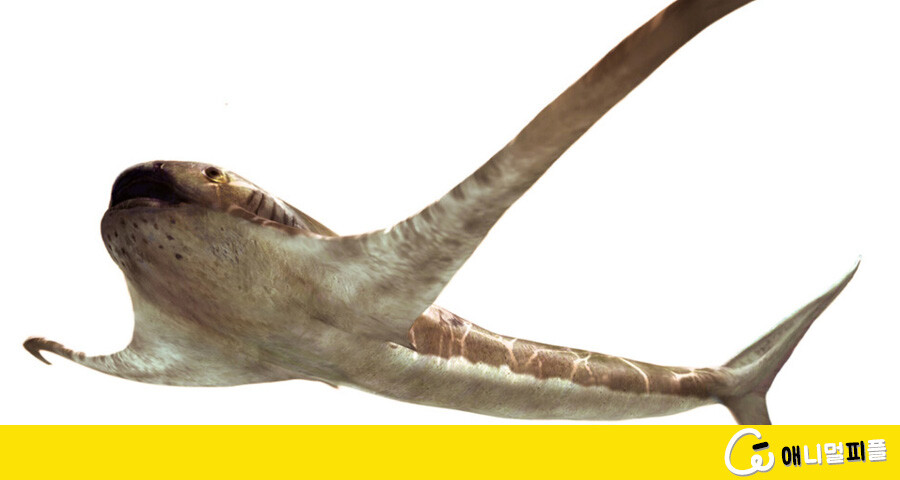[애니멀피플]
A completely new type of shark that used to fly underwater… It seems like I ate plankton

The imagination of Aquiloram and Milarca, reported as a new family of sharks that lived in the Cretaceous Period. It looks like a combination of a giant manta ray and a whale shark. Provided by Bullo et al. (2021)’Science’
A completely new type of shark fossil was discovered, which was flapping its pectoral fins longer than its body length, swimming around the surface of the Mesozoic Sea and eating plankton 93 million years ago. In a paper published in the scientific journal’Science’ on the 19th, an international research team such as Roman Bullo, a paleontologist at Rendae, said, “The analysis of fossils found in Mexico in 2012 revealed a new type of shark that looks like a combination of rays and sharks.” “The shark flying in the air is an unexpected evolutionary experiment.” The shark, which researchers reported as a new family, is 1.65m long, but it has a unique shape that reaches 1.9m when its pectoral fin is stretched out. The large mouth and fossils did not remain, but it was presumed that very small teeth were present, so they would have eaten plankton or small fish while swimming on the sea surface, the researchers said.

Shark fossils with long fins and other perfectly preserved. In the cartilaginous shark, teeth and vertebrae are sometimes found as fossils, but the entire body is rarely left as fossils. Provided by Bullo et al. (2021)’Science’
Its elongated body and well-developed tail resembled a common shark. The researchers said in the paper, “The shark swam slowly with its tail wagging, and its elongated pectoral fin mainly functioned to balance the body, but it might have fluttered slowly to aid propulsion,” the researchers said in the paper. Cartilage fish, such as sharks and rays, appeared 380 million years ago and flourished successfully and differentiated into various species. This shark, which lived in the Cretaceous sea at the end of the Mesozoic Era, appeared 30 million years ago than a group of giant manta rays similar in fin form and diet. “We can see that the wing-shaped fins evolved independently long before we knew it,” the researchers said.

A giant manta ray that filters plankton and eats it. This study reveals that an animal in the form of fluttering long fins and swimming independently evolved 30 million years earlier than this. Provided by Wikimedia Commons
The uniquely shaped shark, flapping its long fins, was unable to escape the mass extinction of 66 million years ago, which, along with dinosaurs, killed 75% of the marine species. Researchers explained in the thesis, “(It would have been a direct hit that plankton extinct as the surface of the sea was acidified by a global-scale fire caused by an asteroid impact.” Whale sharks and giant manta rays were in empty seas after the extinction event. It is a newly emerged biological species. Science, DOI: 10.1126/science.abc1490 By Cho Hong-seop, staff reporter [email protected]
